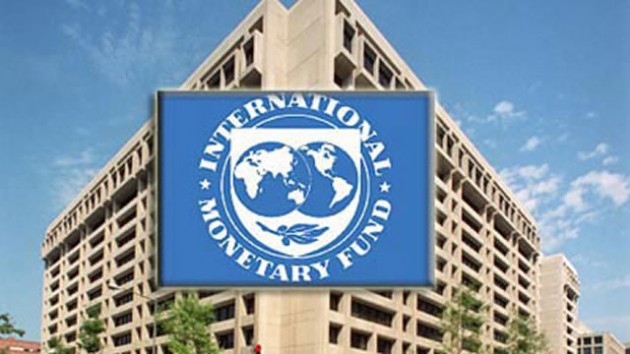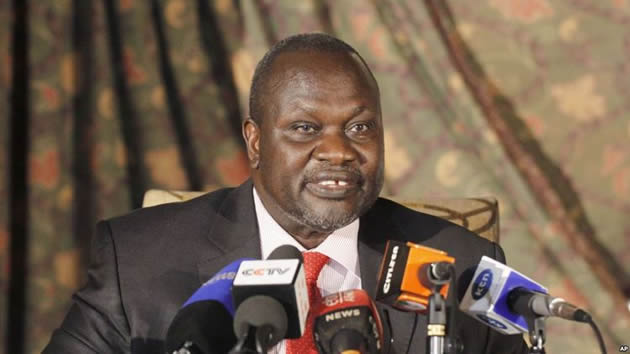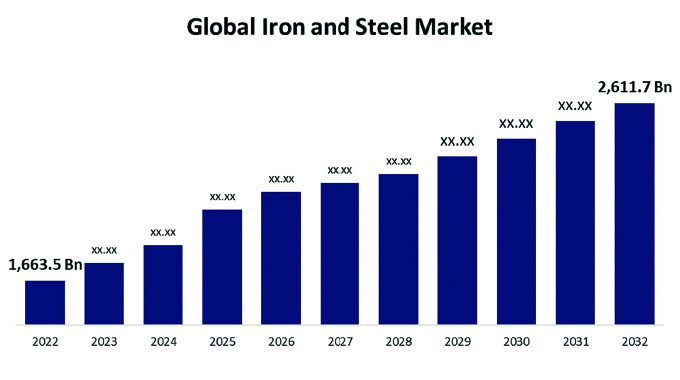IMF paints gloomy picture on global economy

Dr Gift Mugano
The International Monetary Fund (IMF) in its recent World Economic Outlook (WEO) titled Too Slow for Too Long showed that baseline projection for global growth in 2016 is a modest 3,2 percent, broadly in line with last year, and a 0,2 percentage point downward revision relative to the January 2016 WEO update. The recovery is projected to strengthen in 2017 and beyond, driven primarily by emerging market and developing economies, as conditions in stressed economies start gradually to normalise.
But uncertainty has increased, and risks of weaker growth scenarios are becoming more tangible. The fragile conjuncture increases the urgency of a broad-based policy response to raise growth and manage vulnerabilities.
The global recovery has weakened further amid increasing financial turbulence.
Activity softened toward the end of 2015 in advanced economies, and stresses in several large emerging market economies showed no signs of abating.
Adding to these headwinds are concerns about the global impact of the unwinding of prior excesses in China’s economy as it transitions to a more balanced growth path after a decade of strong credit and investment growth,along with signs of distress in other large emerging markets, including from falling commodity prices.
With heightened risk aversion and increasing concerns about the lack of policy space, the valuation of risky assets as well as oil prices dropped sharply in early2016.
However, market sentiment began to improve in mid-February, and by the end of March market valuations had recovered most of or all the ground lost earlier in the year.
While growth in emerging market and developing economies still accounts for the lion’s share of projected world growth in 2016, prospects across countries remain uneven and generally weaker than over the past two decades. In particular, a number of large emerging markets – including Brazil and Russia – are still mired in deep recessions.
Others, including several oil-exporting countries, also face a difficult macroeconomic environment with sharply weaker terms of trade and tighter external financial conditions.
The IMF noted that growth in China and India has been broadly in line with projections, but trade growth has slowed down noticeably. The trade slowdown is related to the decline in investment growth across emerging market economies, which reflects rebalancing in China but also the sharp scaling down of investment in commodity exporters, particularly those facing difficult macroeconomic conditions.
Growth in advanced economies is projected to remain modest, in line with 2015 outcomes.
Unfavourable demographic trends, low productivity growth,and legacies from the global financial crisis continue to hamper a more robust pickup in activity.
While very accommodative monetary policy and lower oil prices will support domestic demand, still-weak external demand, further exchange rate appreciation – especially in the United States and somewhat tighter financial conditions will weigh on the recovery.
In the euro area,the risk of a de-anchoring of inflation expectations is a concern amid large debt overhangs in several countries.
Of concern to Zimbabwe, the IMF indicated that South Africa is likely to face economic headwinds and its currency can weaken further.
As a result, the IMF has lowered SA’s growth prospects for this year to 0,6 percent from 0,7 percent and to 1,2 percent for next year. A number of factors are at play:
Capital outflow/flight;
Subdued commodity prices;
Political turmoil;
Low business confidence;
Severe drought;
Soaring food prices
These fundamental will certainly continue to put pressure on the South African Rand which has been racking havoc in the Zimbabwean economy.
The projected pickup in growth in 2017 (3,5 percent) and over the rest of the forecast horizon hinges crucially on rising growth in emerging market and developing economies, as growth in advanced economies is expected to remain modest, in line with weakened potential growth.
This outcome relies on a number of important assumptions:
A gradual normalisation of conditions in several economies currently under stress;
A successful rebalancing of China’s economy with trend growth rates that – while lower than those of the past two decades – remain high;
A pickup in activity in commodity exporters, albeit at rates more modest than in the past;
Resilient growth in other emerging market and developing economies
However, the IMF underscored that, in the current environment, the likelihood that this central scenario will materialise has weakened, as risks of weaker growth have become more salient.
Across advanced economies, activity slowed during the second part of 2015, and asset price declines and widening spreads have tightened financial conditions. If sustained, these developments could further weaken growth, with risks of a stagnation scenario with persistent negative output gaps and excessively low inflation.
Emerging market stress could rise further, also reflecting domestic vulnerabilities. For instance,an additional bout of exchange rate depreciations could further worsen corporate balance sheets, and a sharp decline in capital inflows could force a rapid compression of domestic demand.
A protracted period of low oil prices could further destabilise the outlook for oil-exporting countries.
While some countries still have sizable buffers, these are eroding, and some countries already face the need for sharp expenditure cuts.
The rebalancing process in China may be less smooth than assumed in the baseline scenario. A sharper slowdown in China than currently projected could have strong international spillovers through trade, commodity prices, and confidence, and lead to a more generalised slowdown in the global economy, especially if it further curtailed expectations of future income.
Shocks of a non-economic origin-related to geopolitical-conflicts, political discord, terrorism, refugee flows, or global epidemics – loom over some countries and regions, and, if left unchecked, could have significant spillovers on global economic activity.
On the upside, the recent decline in oil prices may boost demand in oil-importing countries more strongly than currently envisaged, including through consumers’ possible perception that prices will remain lower for longer.
IMF called for a more aggressive policy actions to lift demand and supply potential also foster stronger growth, in both the short and longer term. These measures include but not limited to:
Strengthening growth, in advanced economies, securing higher and sustainable growth requires a three-pronged consisting of mutually reinforcing(1) structural reforms, (2) continued monetary policy accommodation, and (3) fiscal support – in the form of growth-friendly fiscal policies where adjustment is needed and fiscal stimulus where space allows. On the supply side, implementing a credible and country-specific structural reform agenda that takes into account both the short- and medium-term impact of reforms is a key element of the comprehensive strategy. Reforms that entail fiscal stimulus (for example, reducing labour tax wedges and increasing public spending on active labour market policies) and reforms that lower barriers to entry in product and services markets may be most valuable at this juncture, as they can provide some near term demand support, not only through increased confidence and expectations of higher future income,but directly.
On the demand side, accommodative monetary policy remains essential where output gaps are negative and inflation is too low.
However, with interest rates at historic lows, a more comprehensive strategy is needed to ensure higher growth.
Monetary policy must be complemented by concerted efforts to accelerate the repair of private sector balance-sheets especially in the euro area to improve monetary policy transmission, ensure orderly deleveraging and bolster credit supply, and contain financial sector risks.
Stronger near-term fiscal policy support, with a focus on boosting future productive capacity and financing demand-friendly structural reforms where needed and where fiscal space is available should provide a fillip to growth.
Securing resilience, in emerging market and developing economies, policymakers should reduce macroeconomic and financial vulnerabilities and rebuild resilience, including by implementing productivity enhancing reforms. In some commodity exporters,fiscal buffers can help smooth the adjustment to lower commodity prices, but it will be important to plan for fiscal adjustment to durably lower commodity revenues and new, more diverse growth models. In others, financial strains may limit the room to implement a gradual adjustment.
Exchange rate flexibility, where feasible, should also be used to cushion the impact of adverse terms-of-trade shocks,although the effects of exchange rate depreciations on private and public sector balance sheets and on domestic inflation need to be closely monitored.
Establishing fiscal policy frameworks that anchor longer-term plans will help build resilience by allowing smoother expenditure adjustment in response to adverse shocks.
In commodity importers, whether all the gains should be saved depends on the extent of economic slack, the availability of fiscal space,and countries’ needs.
In particular, these gains may provide an opportunity to finance critical structural reforms or growth-enhancing spending.
The international policy response, should a significant shortfall in growth threaten to push the global economy back into recession, a collective macroeconomic-policy reaction would be needed. Policymakers in the larger economies should pro-actively identify additional policy actions that could be implemented quickly if there are signs that global downside risks are about to materialise.
Enhancing the global financial safety net and oversight, to address the potentially protracted risks faced by commodity exporters and emerging markets with strong fundamentals but high susceptibility to shocks, there may be a need to consider reforms to the global financial safety net. There also remains a pressing need at the global level to complement and implement the regulatory reform agenda.
Ring-fencing spillovers from non-economic shocks, a few countries are currently bearing the brunt of the spill overs with often limited capacity and fiscal space.
Dr Mugano is an Economic Advisor, Author and Expert in Trade and Competitiveness. He is a Research Associate of Nelson Mandela Metropolitan University. Feedback: +263 772 541 209 or [email protected] This article was extracted from the IMF World Economic Outlook Report.









Comments